When I dream of Rome at night, I know it because of the trees: the distinctive Roman pines with long trunks and high fronds have become the equivalent of the Italian capital in my unconscious mind. Since the Renaissance, this tree became an important element of the Italian aesthetic landscape and is now an unmistakable city symbol. The orange colors of the facades, the range of greens of the scenery—olive green my favorite—and the sandy tones of the sculptures and monuments are also part of these mental images. Rome has become synonymous with all these things, and every time I go back, I fall in love with it even more.
It was not always like that. The first time I visited, it was, beyond enchanting, a very overwhelming experience. There was too much to see and do, and an endless list of “must-sees” made me try to see everything without looking closely at anything.
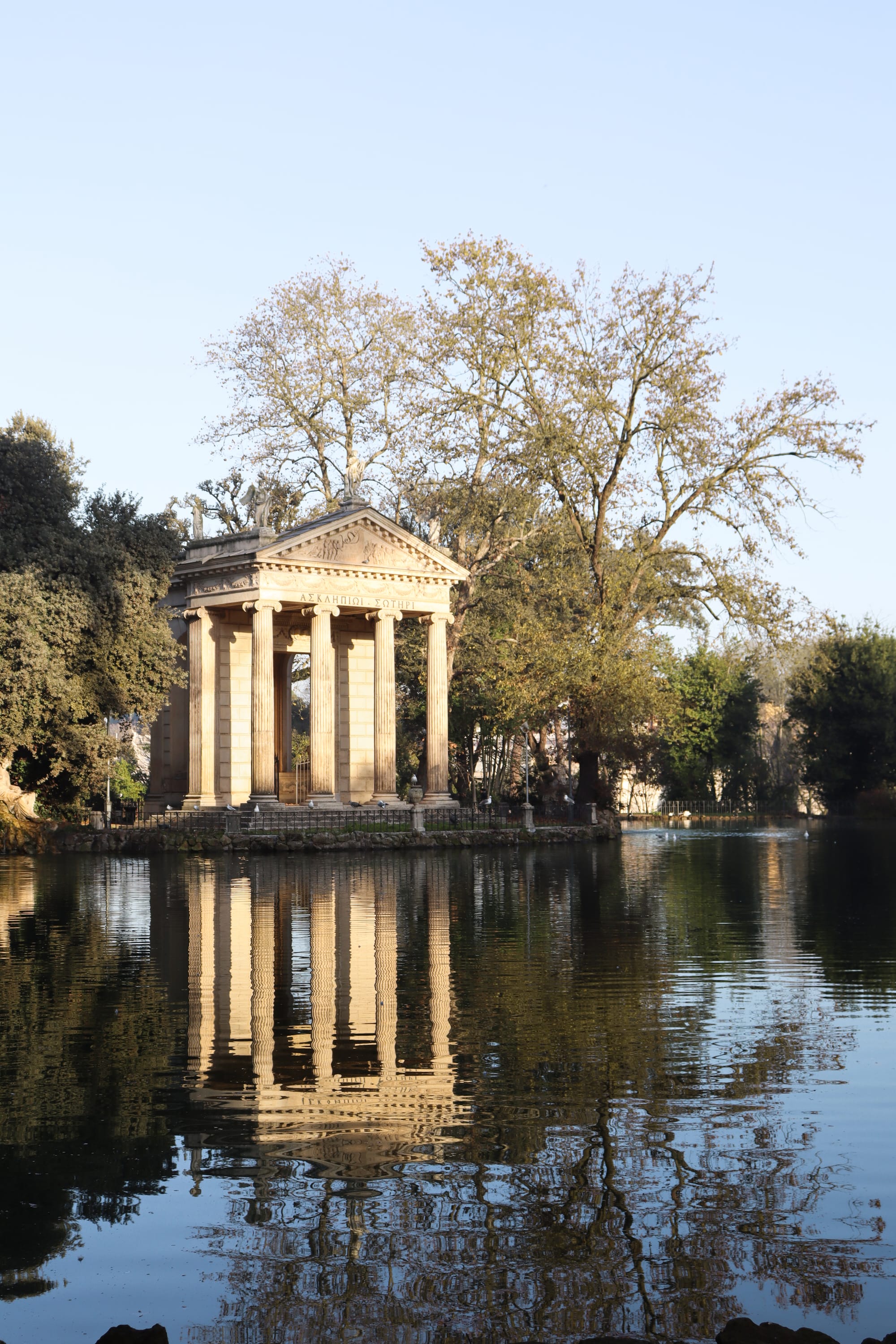
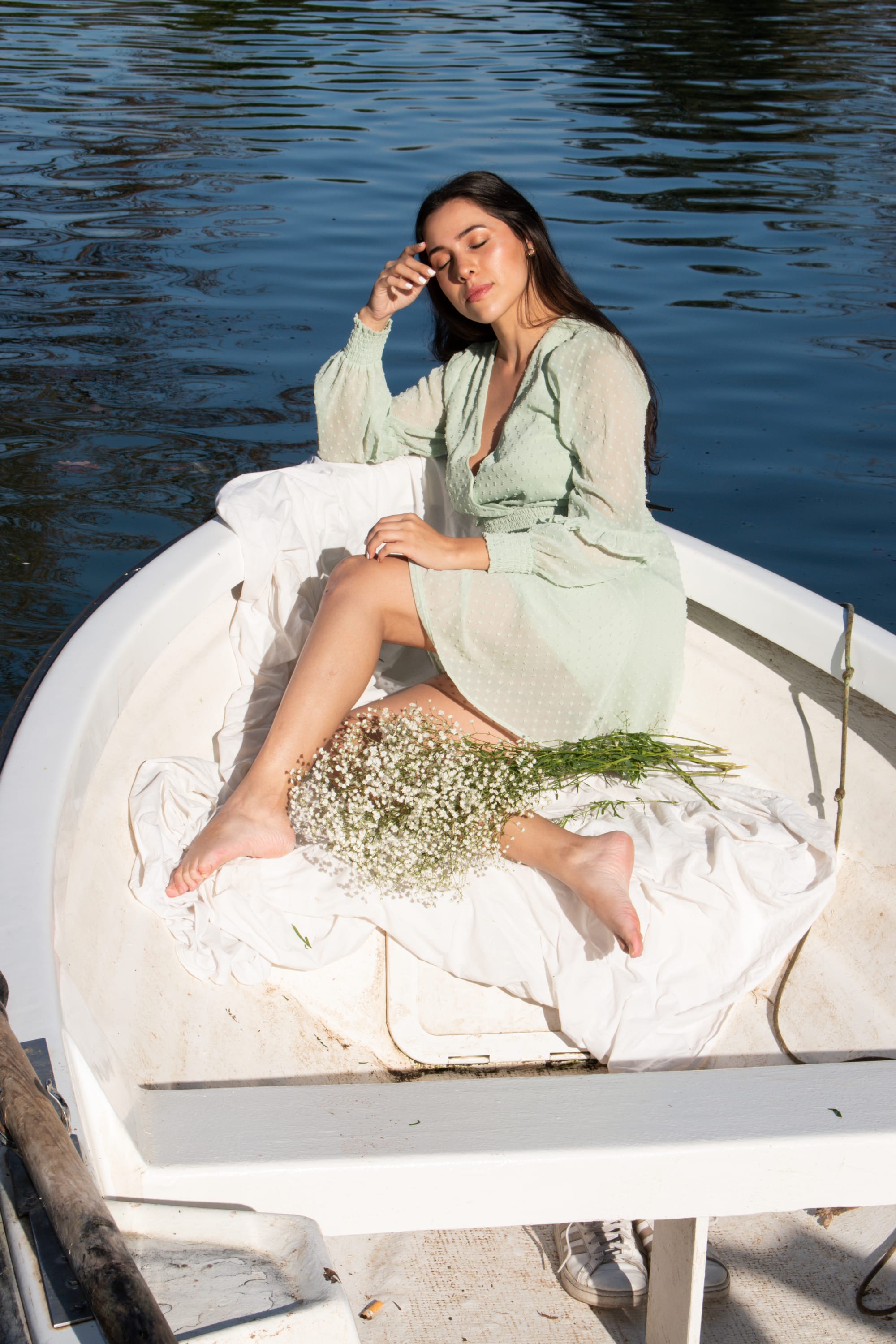
Villa Borghese. Photos by Carlo Mattioli
I now have the pleasure of knowing the city better. I know how to ask the carabinieri (whom I still confuse with the police) for directions in the local language and savor quiet evenings watching the sunset as the light disappears among the many domes that make up the silhouette of its skyline. Now I know how to enjoy Rome the Roman way, ordering a slice of pizza rossa or bianca at il Gianfornaio to eat on the go or having a glass of wine outside Il Goccetto—because there is not always a place inside and the real atmosphere is in the street. I know about truly gorgeous corners hidden among Villa Doria Pamphilj or Villa Borghese, ancient villas of noble families, and now public parks. I was interested in capturing these places, different from the regular postcards of the Colosseum or the Trevi Fountain, and that's where the inspiration for the cover of this magazine came from.
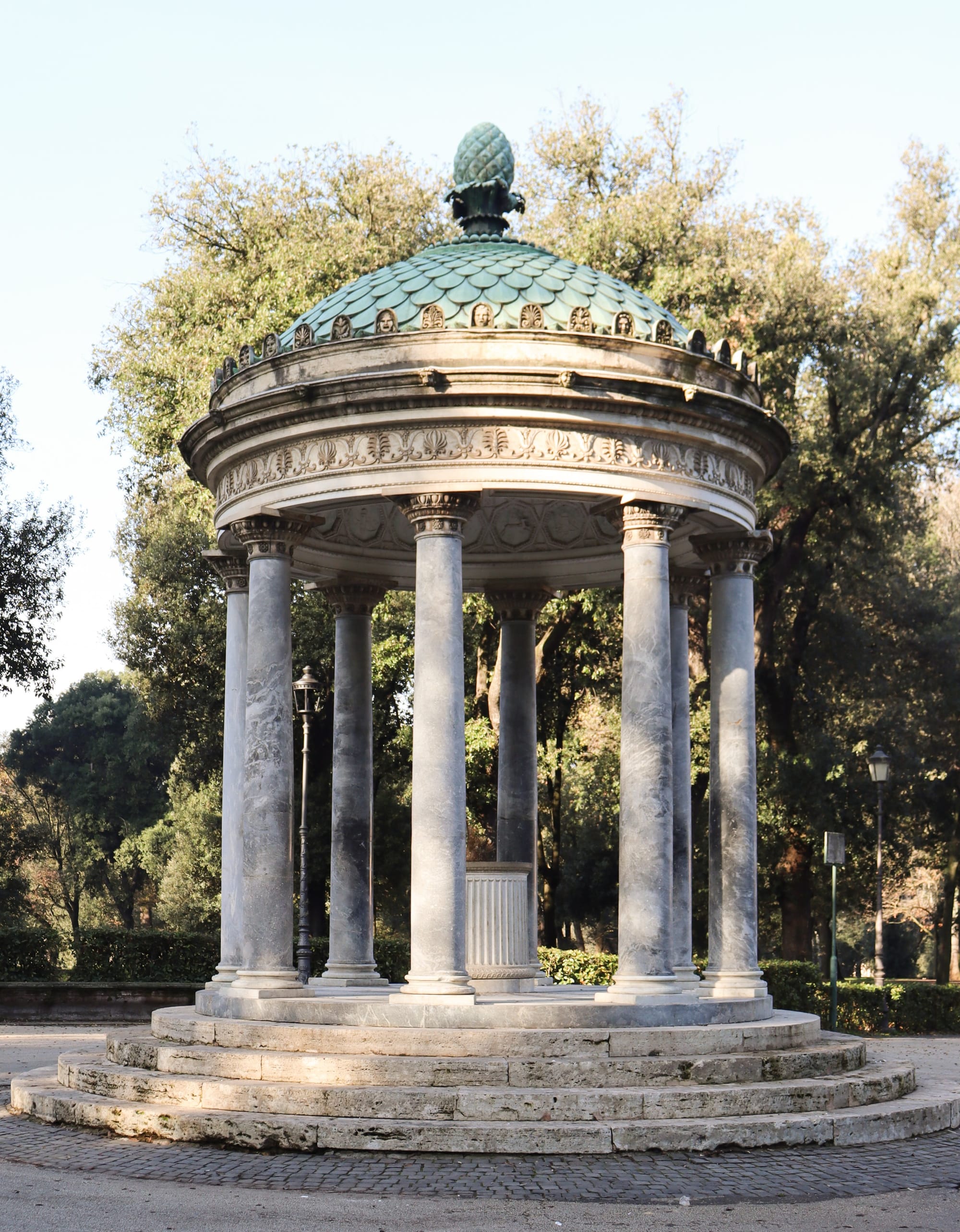
We chose a sunny morning, perfect for the photo shoot in the gardens of Villa Borghese. We began with a couple of shots near the laghetto, the small lake where romantic couples paddle around in small boats. In the middle of it, the Temple to Aesculapius stands, and to its side, hidden among the trees, a statue of a woman with a pitcher seems to be pouring water into the lake. It is a beautiful sculpture, but its greenish color and standing beside a much more monumental structure make it go unnoticed. In a way, it is a metaphor for what happens when visiting Rome; so often captivated by the great monuments, we lose sight of some charming details that are less prominent. A few steps further, another temple is dedicated to the huntress goddess. Although its look suggests that it is from an earlier period, the Tempietto of Diana was created in the 18th century. Eight gray marble columns surround a truncated base where the sculpture of Diana of Gabies once stood, now in the Louvre Museum in Paris.
The natural morning light was perfect for capturing the warmth of the scene. Even without the statue, the temple remains charming in its details. With its reduced scale, this monument dedicated to the “goddess of the night light and lady of the woods” makes me feel as if I were the Roman goddess while walking between its columns. It was such a feeling that I wanted to express, and with the help of a bouquet, a pistachio green dress, and Karen as our model, we transformed it into a photo series. Different animals carved inside its dome form a beautiful monochromatic pattern. On the outside, the dome is cerulean green with a pinecone on the top, which confirms that I am certainly not the only one who dreams of and finds inspiration in Roman pines.
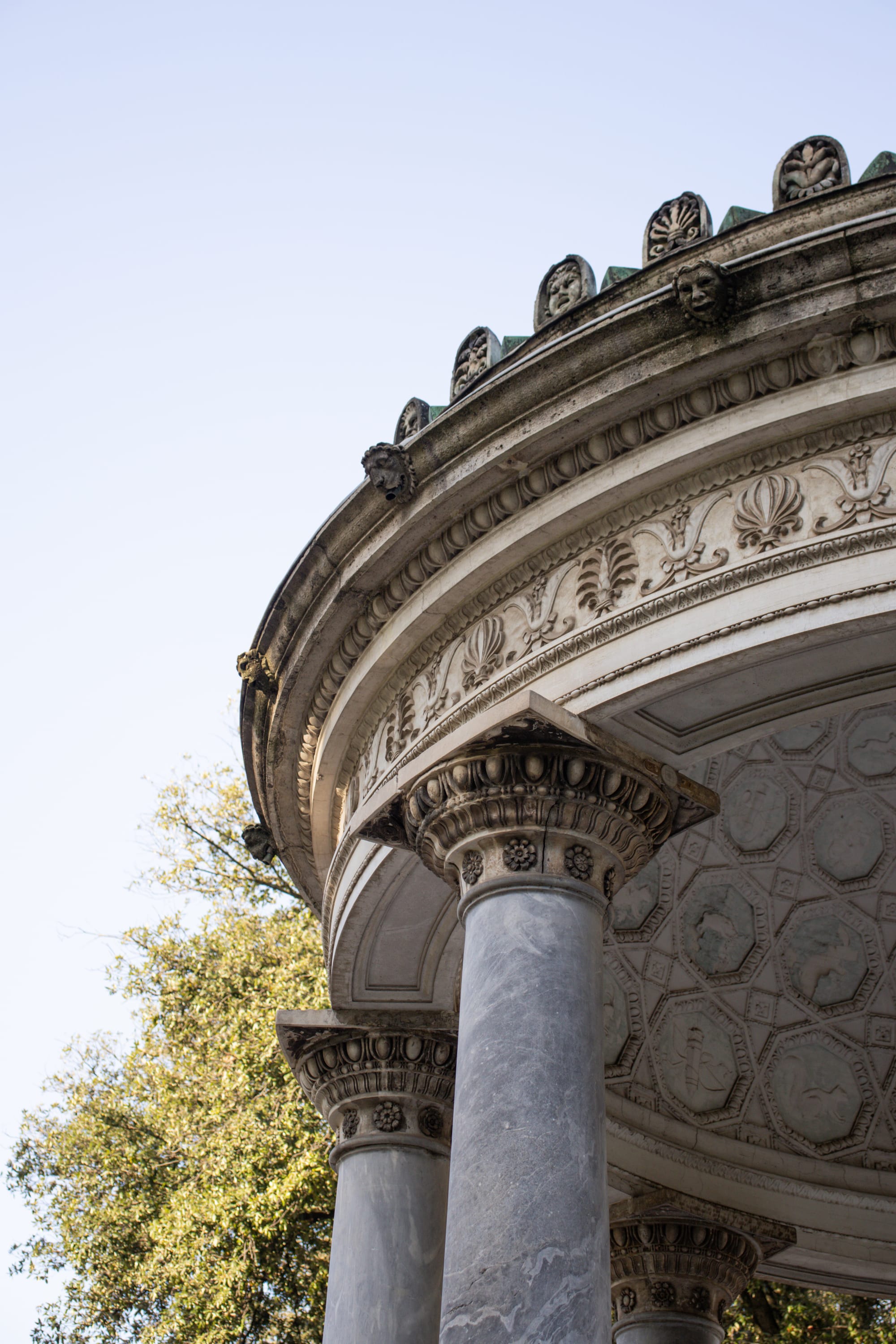
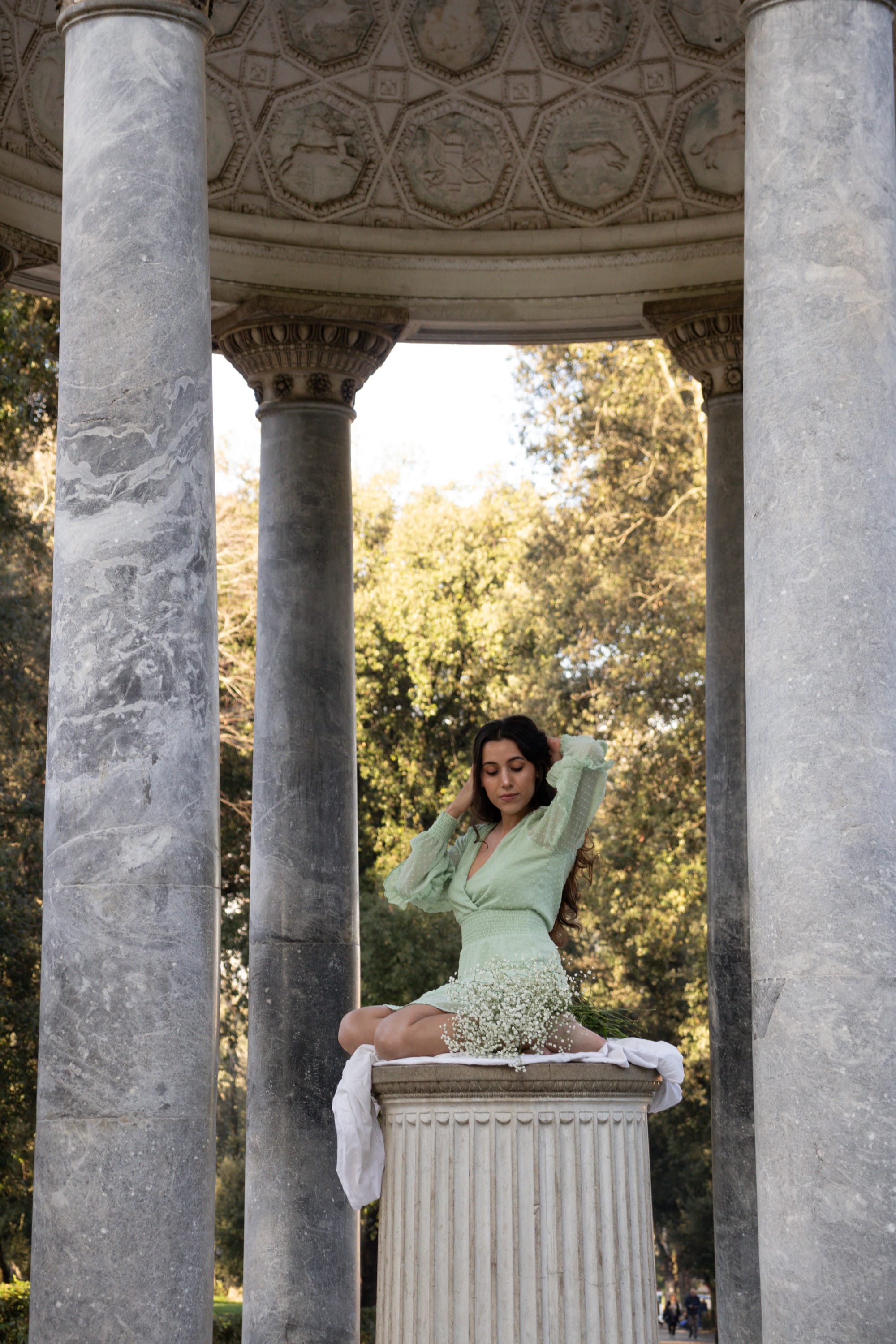
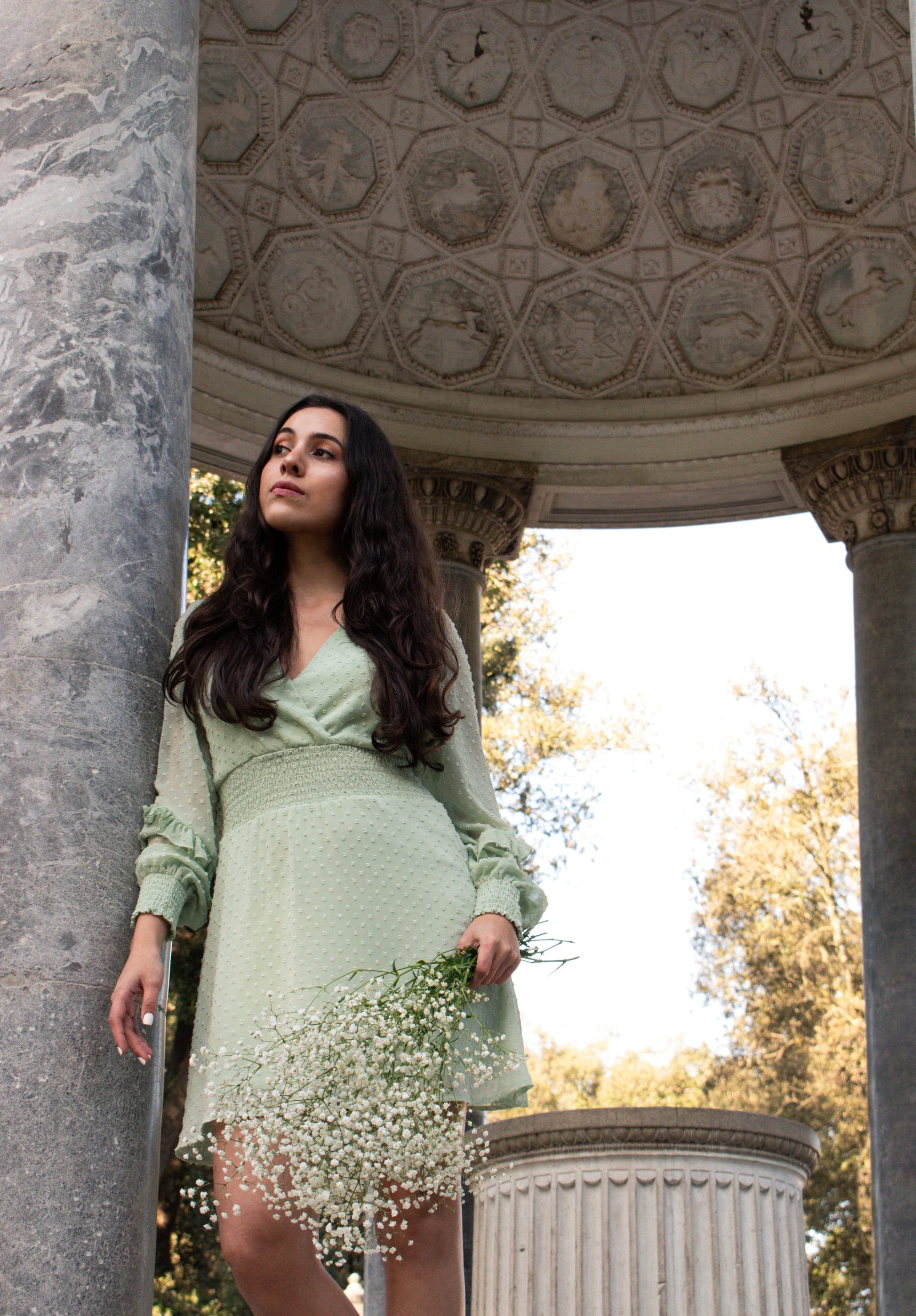
Thanks to Carlo for introducing me to such special Roman corners and portraying their unique essence in this photo series. Thanks to Karen for being our Diana for a morning at Villa Borghese. To both, thank you for making my vision for the first cover of Álula a reality.
A version of this article appears in print, in Issue 1 of Álula Magazine with the headline: “Behind-the-Scenes: Creating the Cover of Álula Magazine”.

